



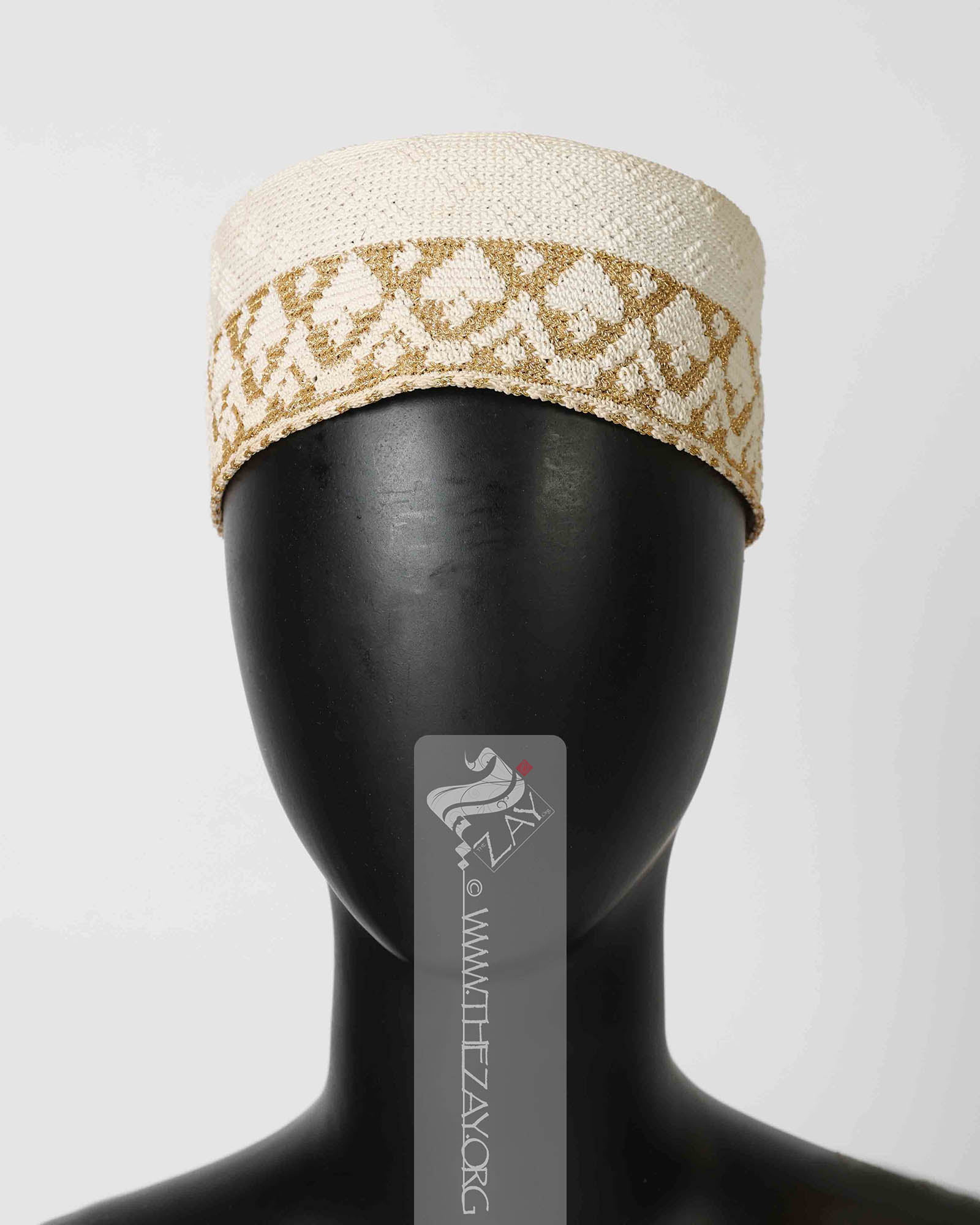
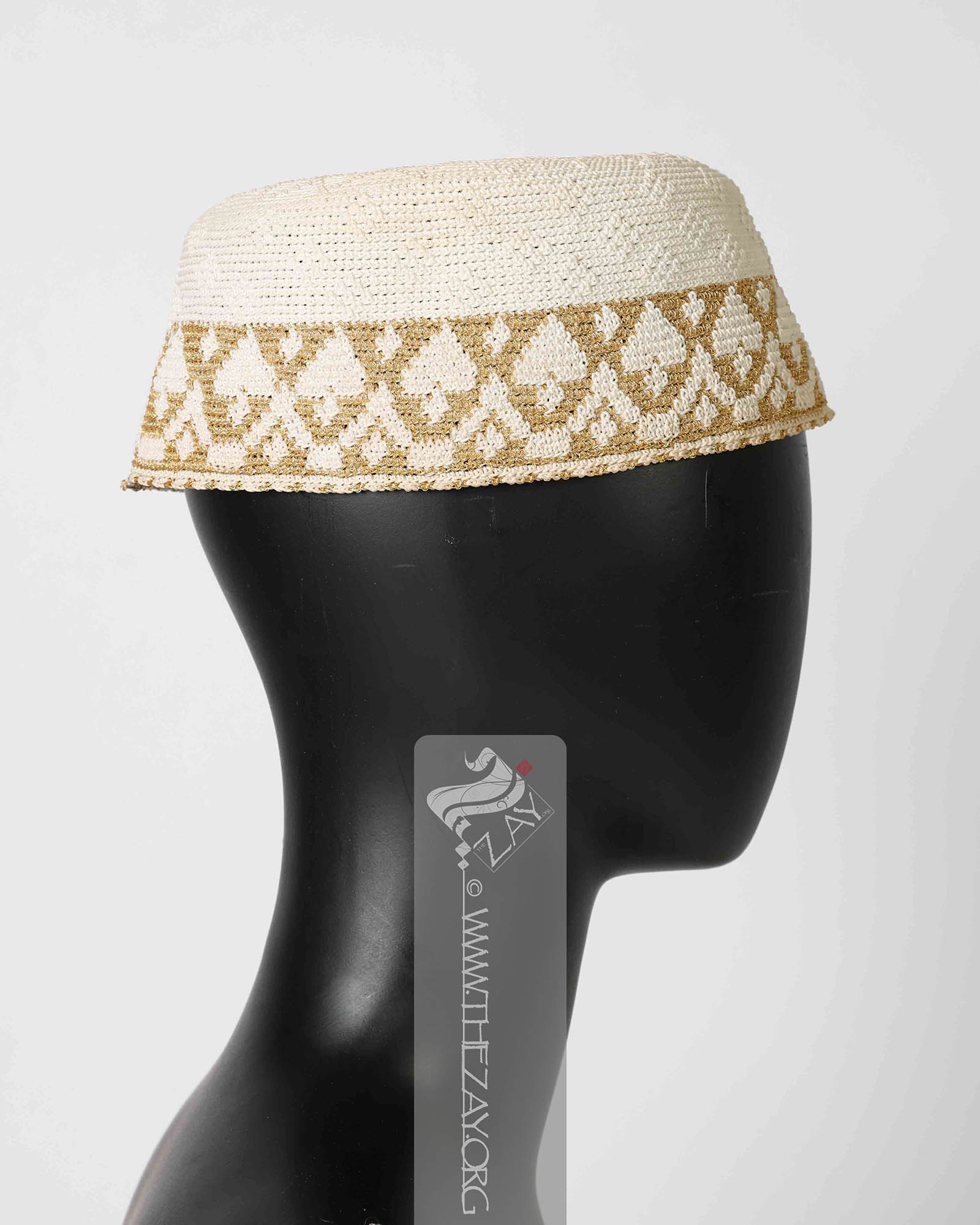
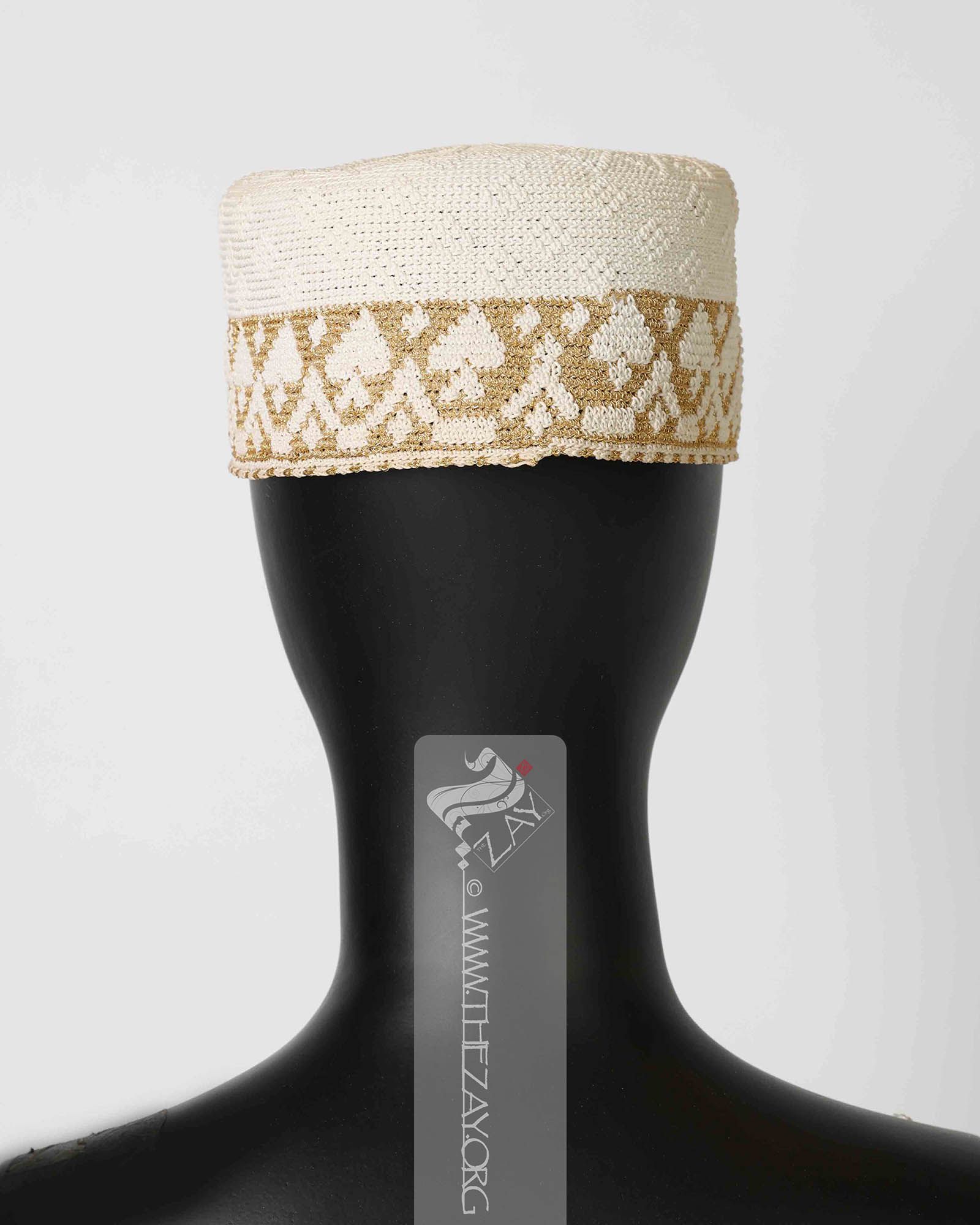
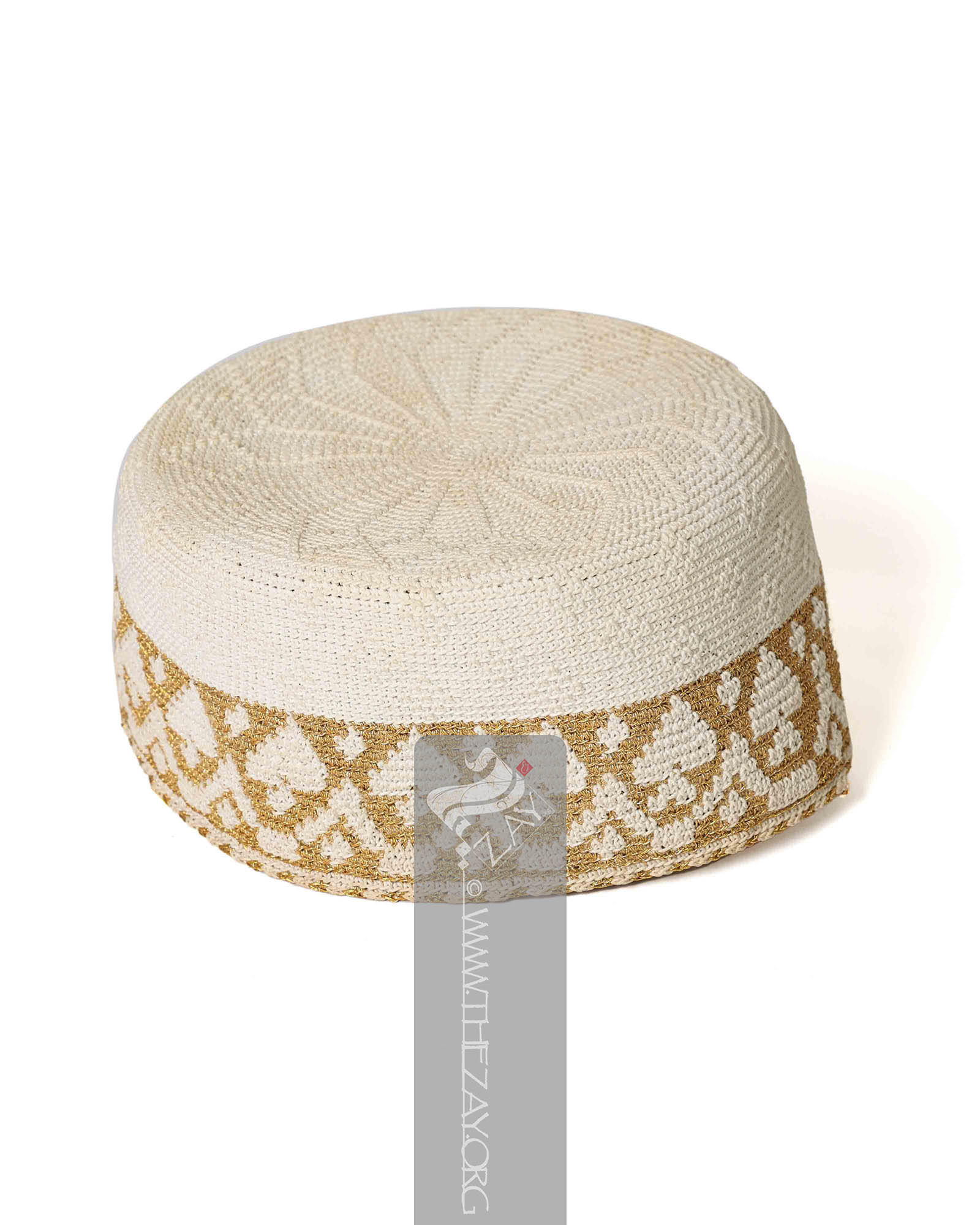
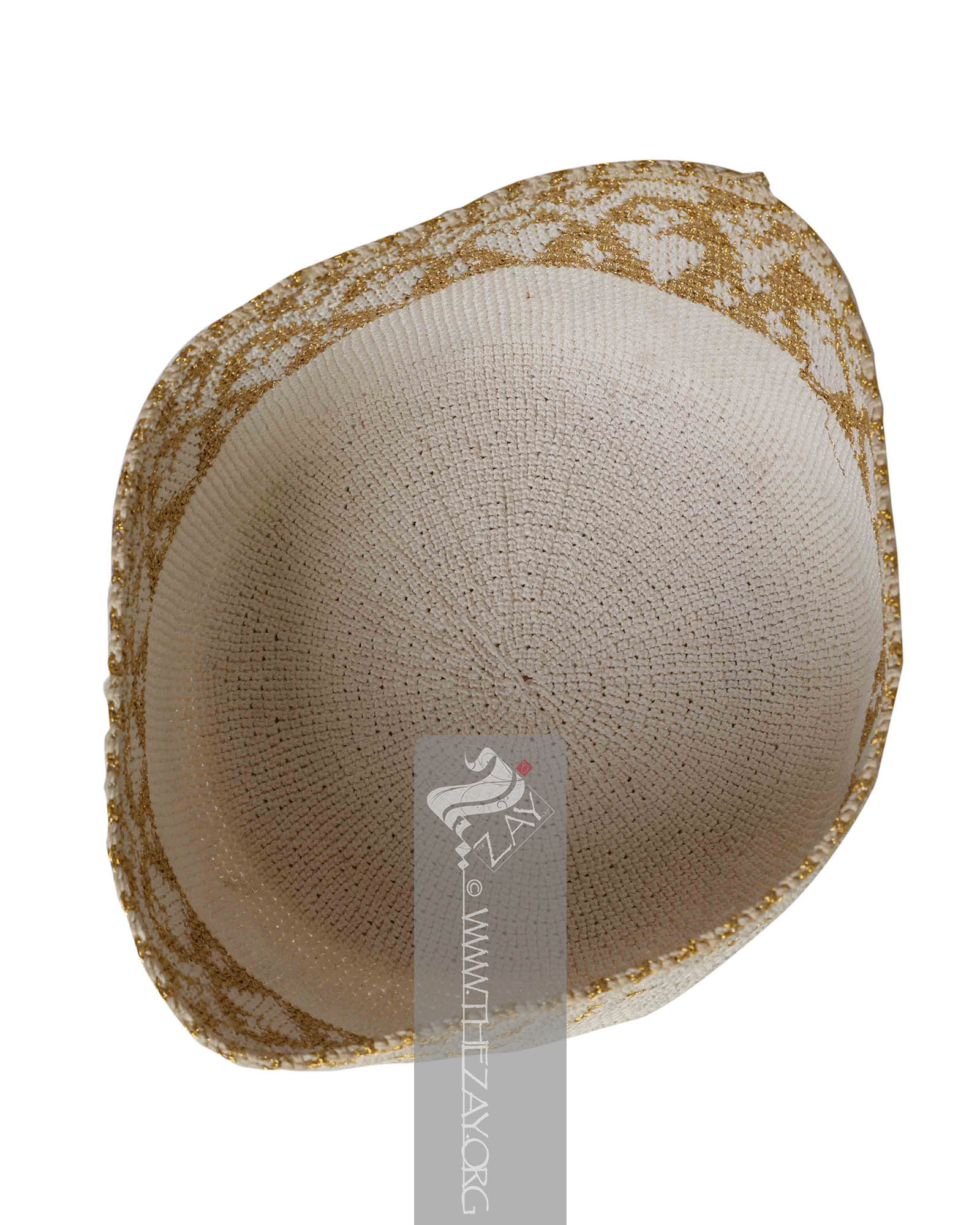
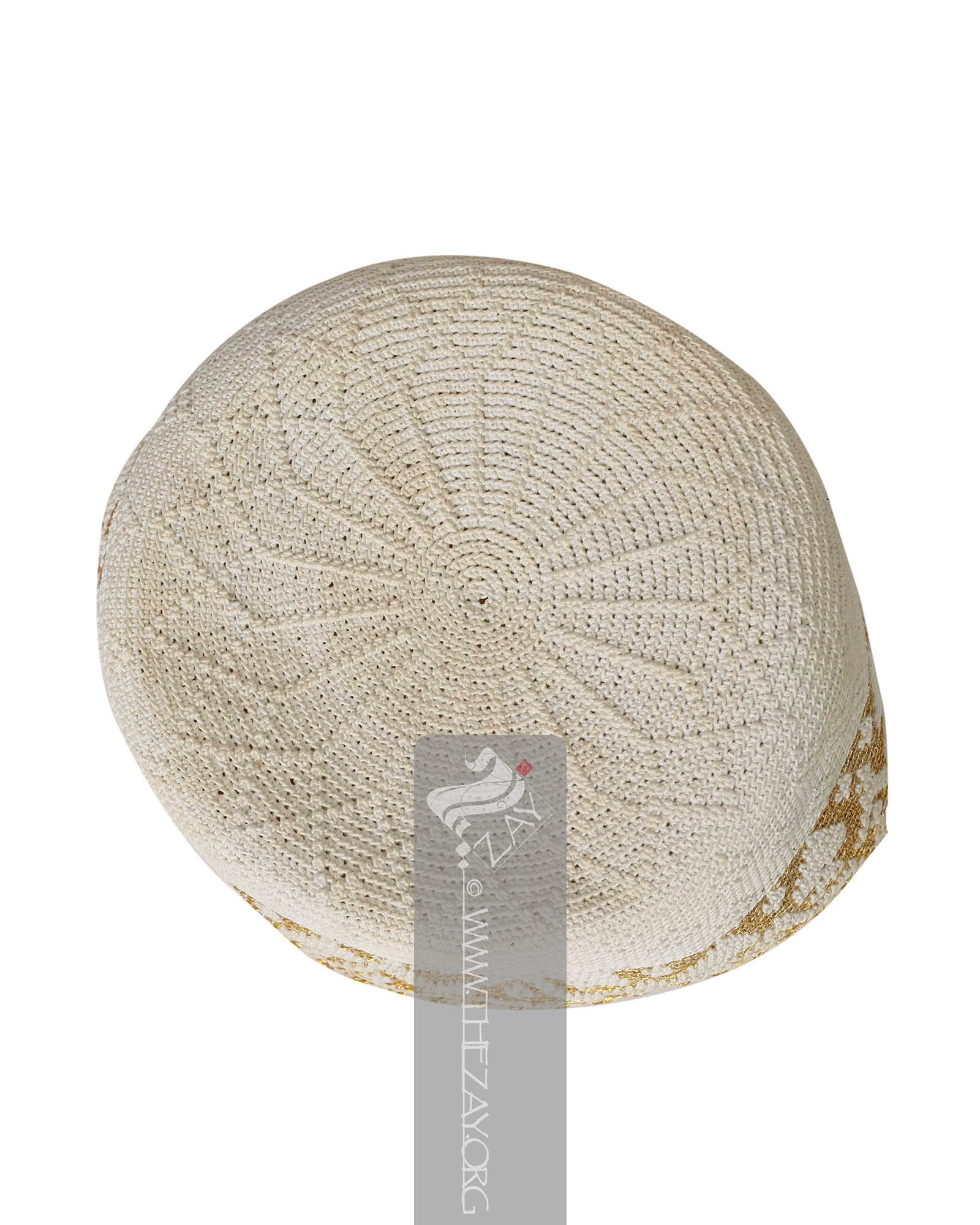
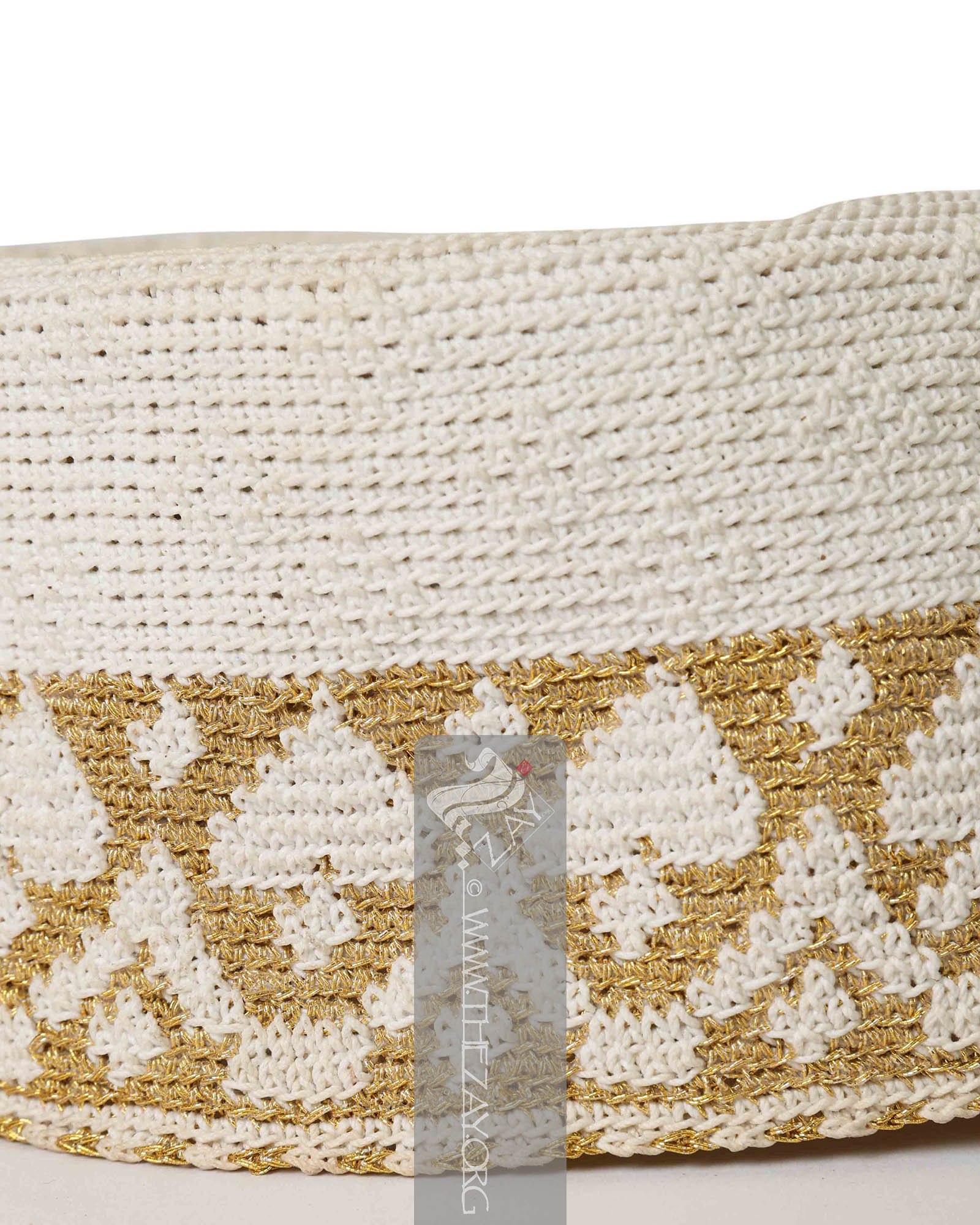
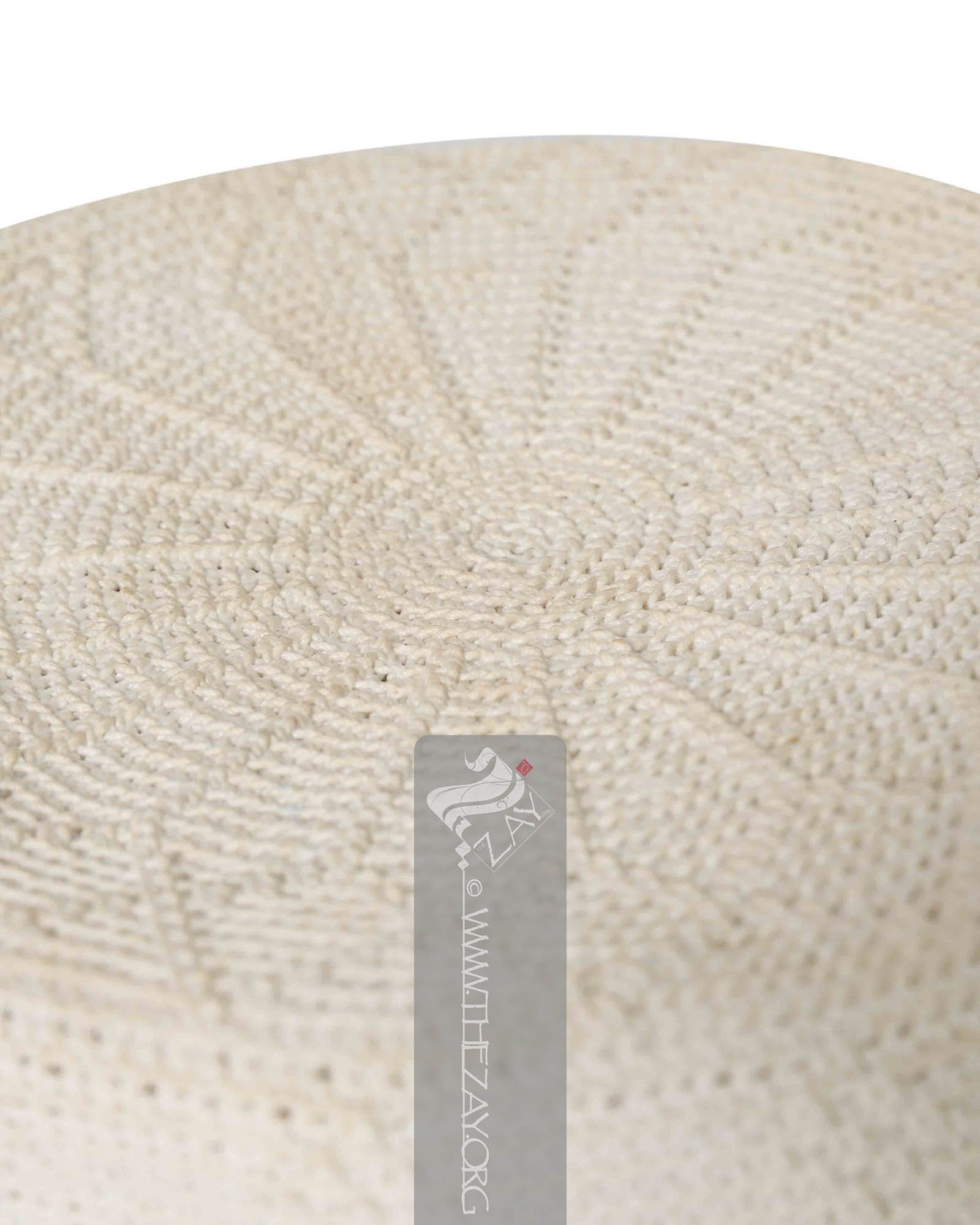
| Local Name | Topi |
| Object Category | Headwear |
| Gender | Male |
| Place Of orgin | Asia |
| Region | Mumbai |
| Object Range | India, Pakistan, Bangladesh |
| Dimensions | Length: 9 cm Width: 22 cm |
| Materials | Cotton Metal |
| Technique | Woven |
| Motif | Floral Geometric |
| Provenance | Purchased, Augusta Auctions, Vermont 2023 |
| Location | The Zay Zay: (Arabic: costume, Pl. azyaā’), a set of clothes in a style typical of a particular country or historical period. Initiative |
| Status | In Storage |
| ZI number | ZI2023.501012.4 ASIA |
Object Note
Part of a set constituting of six more items – two pieces of (ZI2023.501012.1 TUNISIA), (ZI2023.501012.2 ASIA, ZI2023.501012.3 ASIA, ZI2023.501012.5 OMAN, and ZI2023.501012.6 ASIA).
Object History
The piece was bought from Augusta Auctions, in Vermont, by Dr. Reem Tariq
Ṭariq: (Arabic; Synonym: tulle_bi_talli; talli; badla; khus_dozi ), series of small metal knots made on a woven net ground as embellishment. The term is commonly used in the Levant Arab region specifically in Lebanon. Ṭariq: (Arabic; Synonym: tulle_bi_talli; talli; badla; khus_dozi ), series of small metal knots made on a woven net ground as embellishment. The term is commonly used in the Levant Arab region specifically in Lebanon.
Object Features
This men’s skull cap (topi Topi: (Turkic: Tubeteika– traditional caps of Central Asia), a hat or cap of any kind in the Indian subcontinent.) is crocheted in ivory cotton and golden metallic thread. It is usually worn by the Muslim men of the Bohra community in the Indian subcontinent.
The field of the topi Topi: (Turkic: Tubeteika– traditional caps of Central Asia), a hat or cap of any kind in the Indian subcontinent. has very precise geometric patterns, with the crown featuring a large flower in a kaleidoscopic format. The side rim is divided into almost two equal parts, the top of which is plain white with an arrangement of diamond-shaped patterns repeated in an alternate placement.
The bottom half of the rim is crocheted with a combination of ivory cotton as well as golden metallic threads. This half features a repeat of a spade motif in two different sizes, alternately arranged with an arrow-like shape.
Although the Bohra Muslim community – a branch of Shia Islam with origins dating back to the Fatimid Caliphate – of the Indian subcontinent was initiated and introduced by a Yemeni and had far-reaching influences in the neighbouring Arab world like East Africa, it is not clear whether similar costumes and couture culture exists homogeneously within the entire community. Thus, its striking resemblance to the traditional men’s skull cap (kummah Kummah: (Arabic), a traditional rounded men’s skull cap, with a flat top and inward-folded rim worn by men. Originating in Zanzibar, a former Omani colony, it is typically white, and generally custom made to fit, it features ornate colourful designs with small holes for ventilation. ) worn in Oman and East African countries like Zanzibar as well as the city of Gwadar and its neighbouring areas in the southwestern region of Balochistan, Pakistan as it was part of the Sultanate of Muscat and Oman until 1958 is not surprising. This specific style of cap, however, could be instantly identified as a Bohra Muslim men’s cap from the Indian subcontinent, however, its uniqueness to the region is debatable.